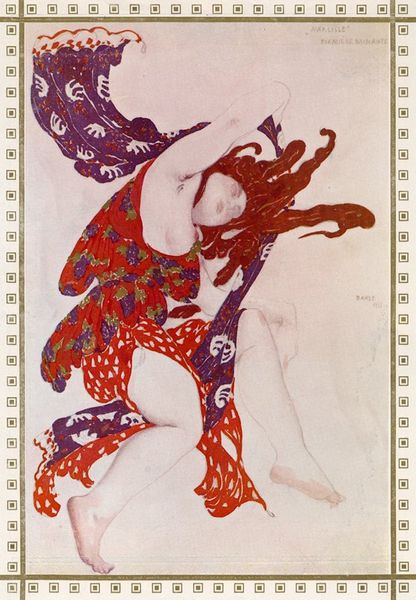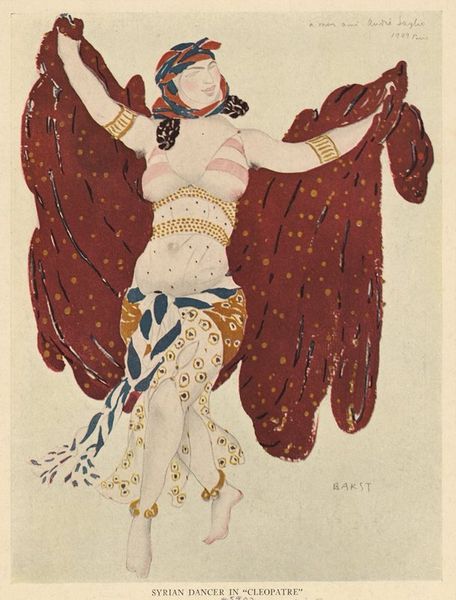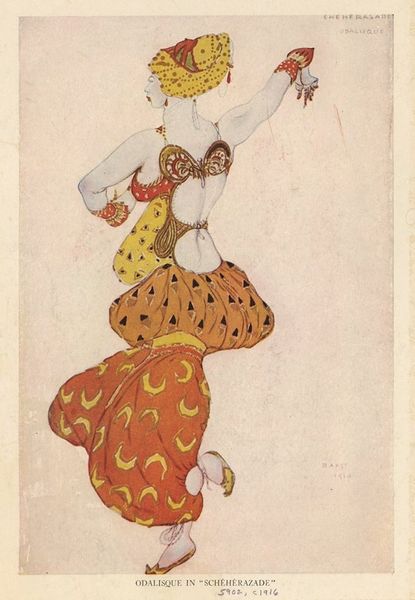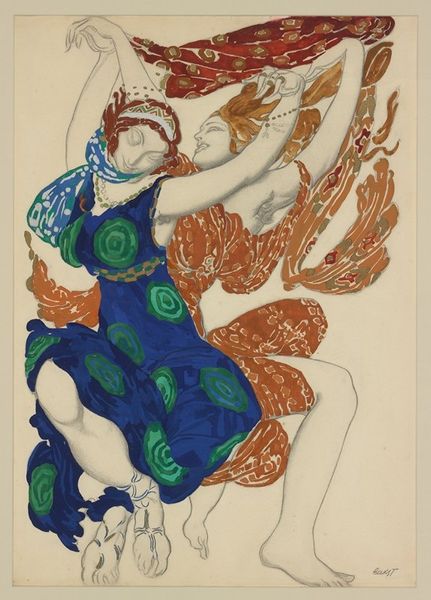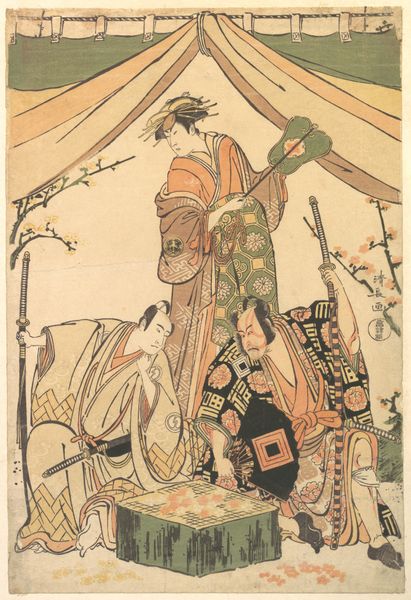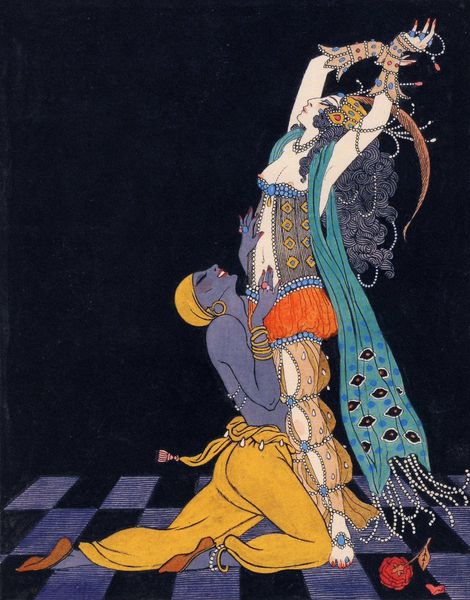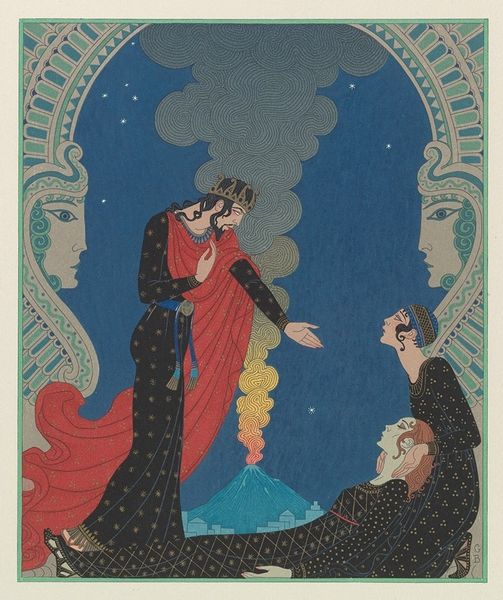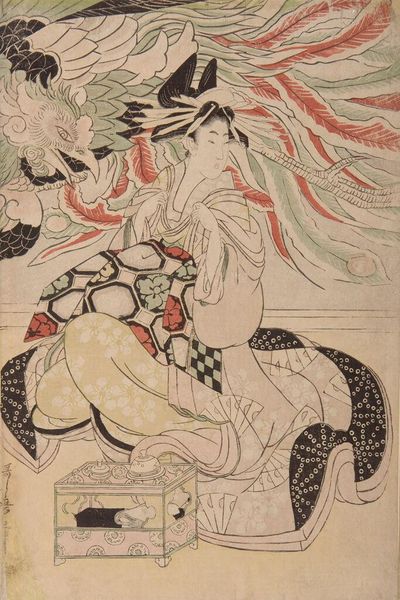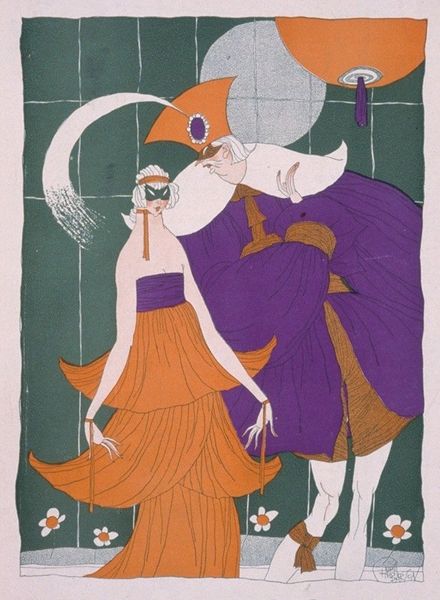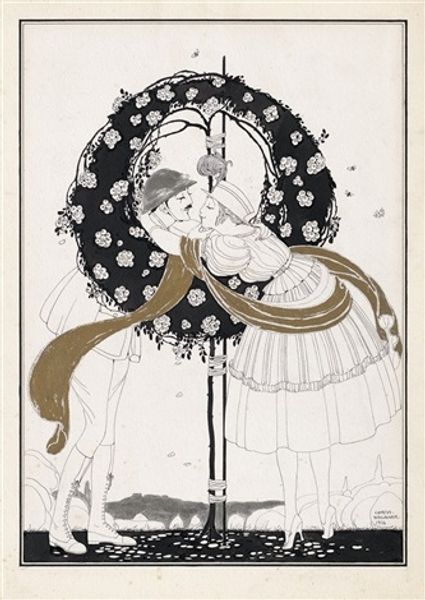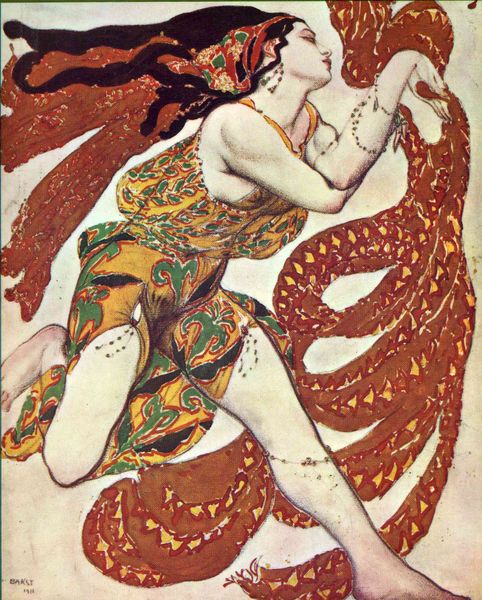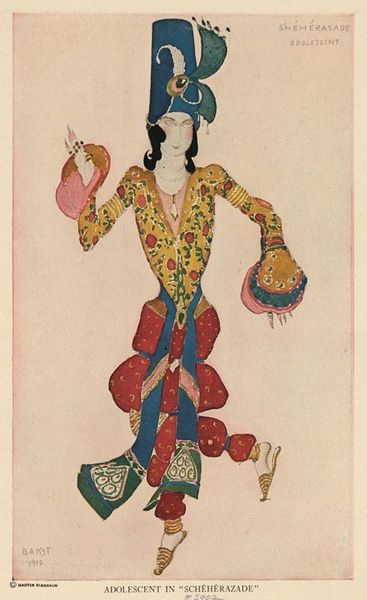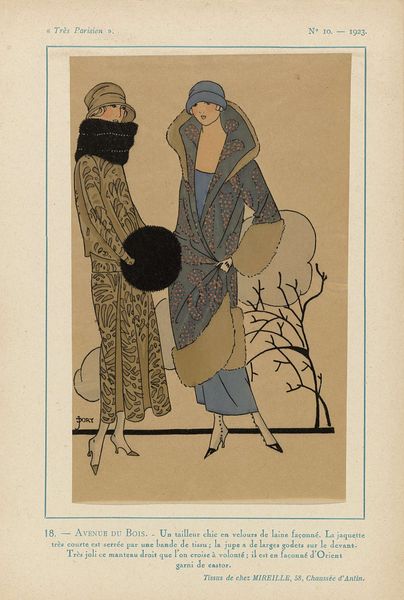
drawing, watercolor
#
portrait
#
drawing
#
art-nouveau
#
watercolor
#
coloured pencil
#
symbolism
#
watercolour illustration
#
watercolor
Copyright: Public Domain: Artvee
Curator: Here we have Léon Bakst's 1911 watercolor and pencil drawing titled "Costume for Narcisse by Tcherepnin." Editor: It’s a striking piece! The figures have an ethereal, almost dreamlike quality, but the clothing feels so substantial and textured. I immediately want to reach out and feel those fabrics. Curator: That tension between the ephemeral and the tangible is key to understanding Bakst's work in this period. As a set and costume designer for the Ballets Russes, he was crafting illusions of exoticism and otherworldliness for a very specific, elite audience. Editor: It's interesting you bring up elite audiences, because the way the paint has been built up really emphasizes a hand-crafted element to the garment. It draws attention to the labor and the hours it would take to produce textiles like these. Curator: Precisely. This design reveals so much about the cross-cultural fascination shaping European art during the Belle Époque. The Ballets Russes, while groundbreaking, were also steeped in Orientalist tropes, presenting a fantasized, often inaccurate vision of the East for Western consumption. Editor: And this isn't simply illustration. I see a conversation happening between the costume as sketched and how it will function on a real dancer’s body. The fabric choice, its weight, the way it moves - that's all implied here. Curator: Absolutely. Bakst wasn't just sketching costumes; he was designing performative identities, shaping the audience's perception of characters within a larger theatrical spectacle. The materiality informed the dance, and the dance, the narrative. Editor: There's a sensuality embedded in the colors and forms too. It speaks to the rich artistic and social fabric from which this emerged. This detail goes much further than the ballet production and shows a historical, intricate design and implementation process that could last an entire performance season. Curator: I think considering the context of its creation, understanding both its artistic innovation and the problematic socio-political forces at play, truly enhances our experience. Editor: I agree. For me, reflecting on the materiality gives it such texture and makes me think about not just the elite ballet stage, but all of the skilled labor involved to produce these designs.
Comments
No comments
Be the first to comment and join the conversation on the ultimate creative platform.
